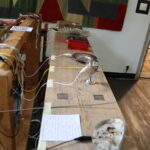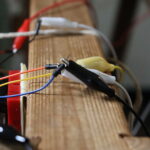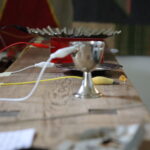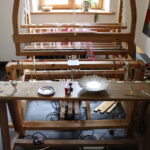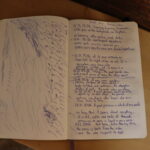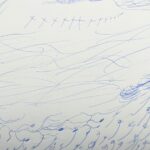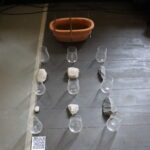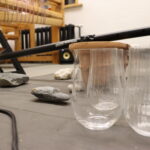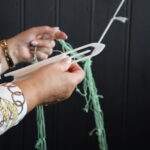Temporal Mantra (2024) - Latvia, Pāvilosta.
Temporal Mantra – Wingel Mendoza
The project “Temporal Mantra” is a series of works that explores the temporal relationship between emotions and objects, focusing on how everyday items, often overlooked, become vessels of matter that echo the essence of their origins at the village in Pāvilosta. This exploration stems from a curiosity about the emotional bonds people forget with the objects that populate their daily lives.
At the PAiR residency in Pāvilosta, this project can evolve to embody the local socio-environmental landscape, drawing from the area’s rich fauna, flora, and the community’s historical ties with the Baltic Sea coastline. The residency’s emphasis on developing sustainable ways of being and engaging with natural processes presents an opportunity to integrate eco-conscious practices into the project’s methodology. This could involve using objects found along the coastline or repurposed materials from the local community, thereby weaving the natural and human histories of Pāvilosta into the fabric of the installation. Moreover, part of the sounds of the “Temporal Mantra” will be field recordings of the area, such as Gray Dunes in Pāvilosta.
By creating “Temporal Mantra” in the setting of Pāvilosta, the project can serve as a bridge between the narrative of object-emotion relationships and the local stories that shape the community’s identity. The residency’s resources and support can enhance the project’s exploration of sound as a medium for social and environmental commentary, offering a platform to experiment with new forms of artistic expression that resonate with the locality’s past, present, and future.
The series “Temporal Mantra” stands as a process-based work, highlighting the importance of exploration, experimentation, and creation. It’s a temporal journey through words, sound and images, witnessing the transformative potential of everyday objects when viewed through the lens of memory.
The piece was initially conceived as an interactive sound sculpture, aiming to document both social and eco-acoustic sound actions in Pāvilosta, Latvia. After spending time at the location, Wingel Mendoza realized that the perspective needed to be reconsidered—not in its main idea, but in its creation process, because he first needed to listen to what the place communicated to him and then translate it into the work.
Therefore, he decided to divide the work into different actions that manifest in three pieces and a performance that is still in development. The actions taken as part of the process were:
Creating a temporal relationship with Pāvilosta, for which Mendoza kept a sound diary, describing what he heard at specific times. Link to the diary texts.
Every day, Mendoza went out to explore with his recorder in hand and recorded almost 100% of his journeys. Later, in the studio, he classified the sounds and worked with those he wanted to expose or transform.
The last part of the process involves memory as both an analog and digital process. Analog in the sense that images and sounds from the journey are exhibited as part of his experience in Pāvilosta. Digitally, through different programs, he collected data from some scenes, whether it is their sound, the color of the image, or other computational processes, where the data are stored to be later transformed or translated into other media.
Temporal Mantra (Searching): Through the interaction of the viewer’s head movement, they can control the audio and the image being projected. Real-time audio synthesis and real-time video.
Temporal Mantra (Connecting): Describes with sound and images the connections Mendoza made during his research, such as words, images, and sounds, with all three media being controlled in real-time by filtering the video and transforming that information into data to be processed as audio, video, and words.
Temporal Mantra (Memory): The interactive sound sculpture allows the spectator to touch different objects found in Pāvilosta or Liepāja, Latvia. The objects react by playing different sounds collected during Mendoza’s journey, such as machines, wind, sea, conversations, water, and so on. Additionally, the spectator can see all the text collected in the diary projected, and when an object is touched, different images of the journey are displayed.
Temporal Mantra (Diary Sound Performance): As part of the final process, Mendoza uses the diary text as musical instructions or text scores, which he performs as short pieces, totaling 22 pieces that last between 1 and 2 minutes each.
This work was produced with the financial
assistance of the European Union. The
views expressed herein can in no way be
taken to reflect the official opinion of the
European Union.

Project selected and supported by



